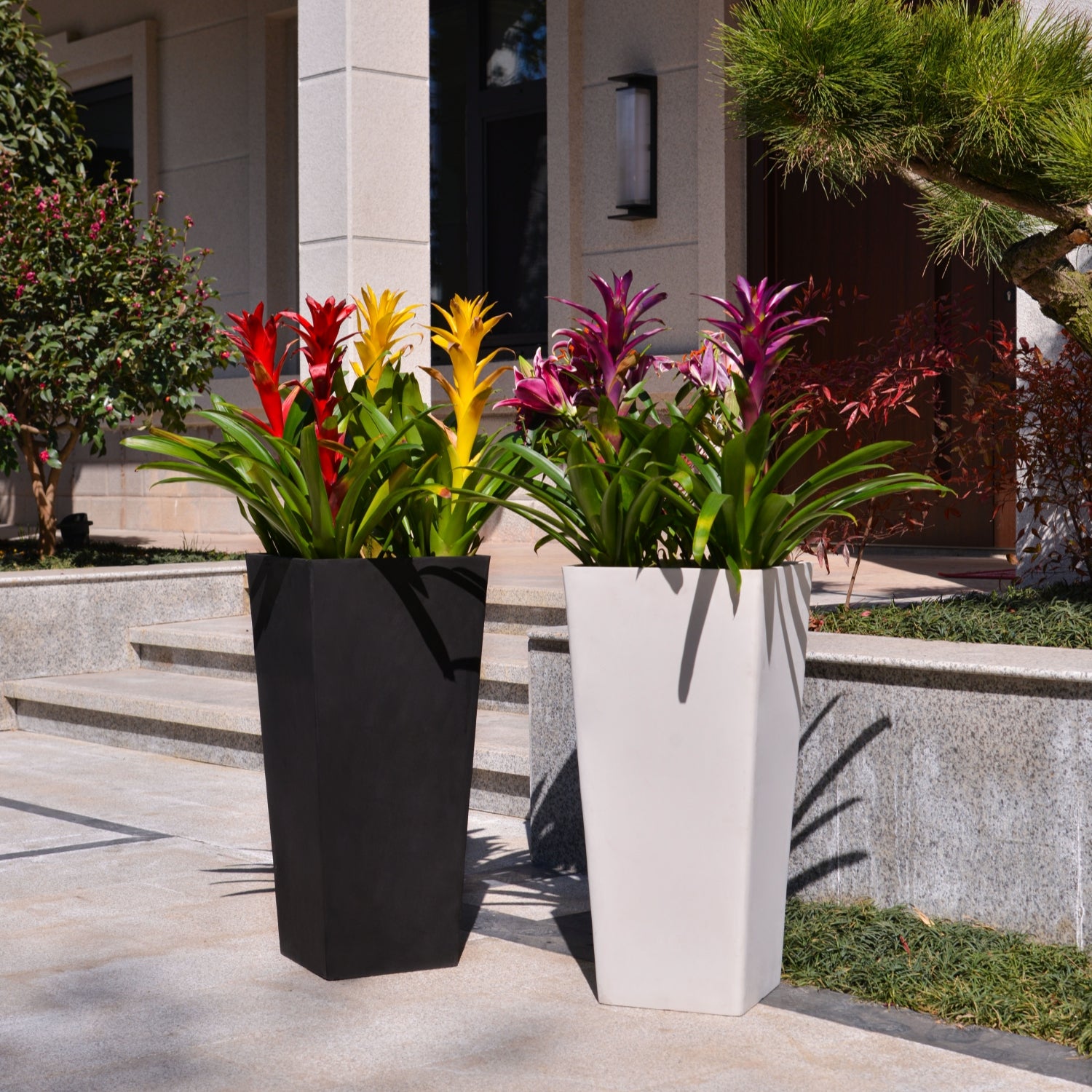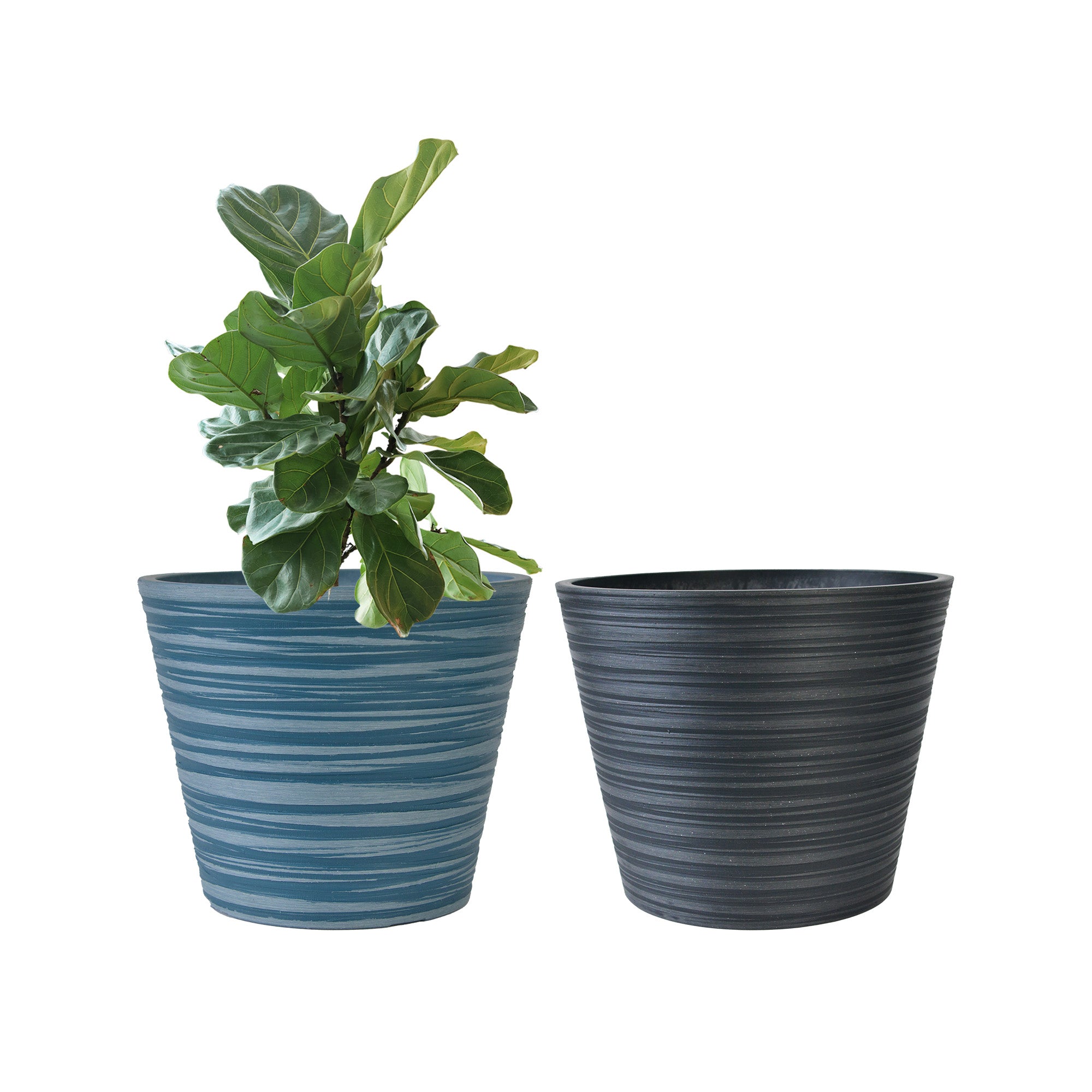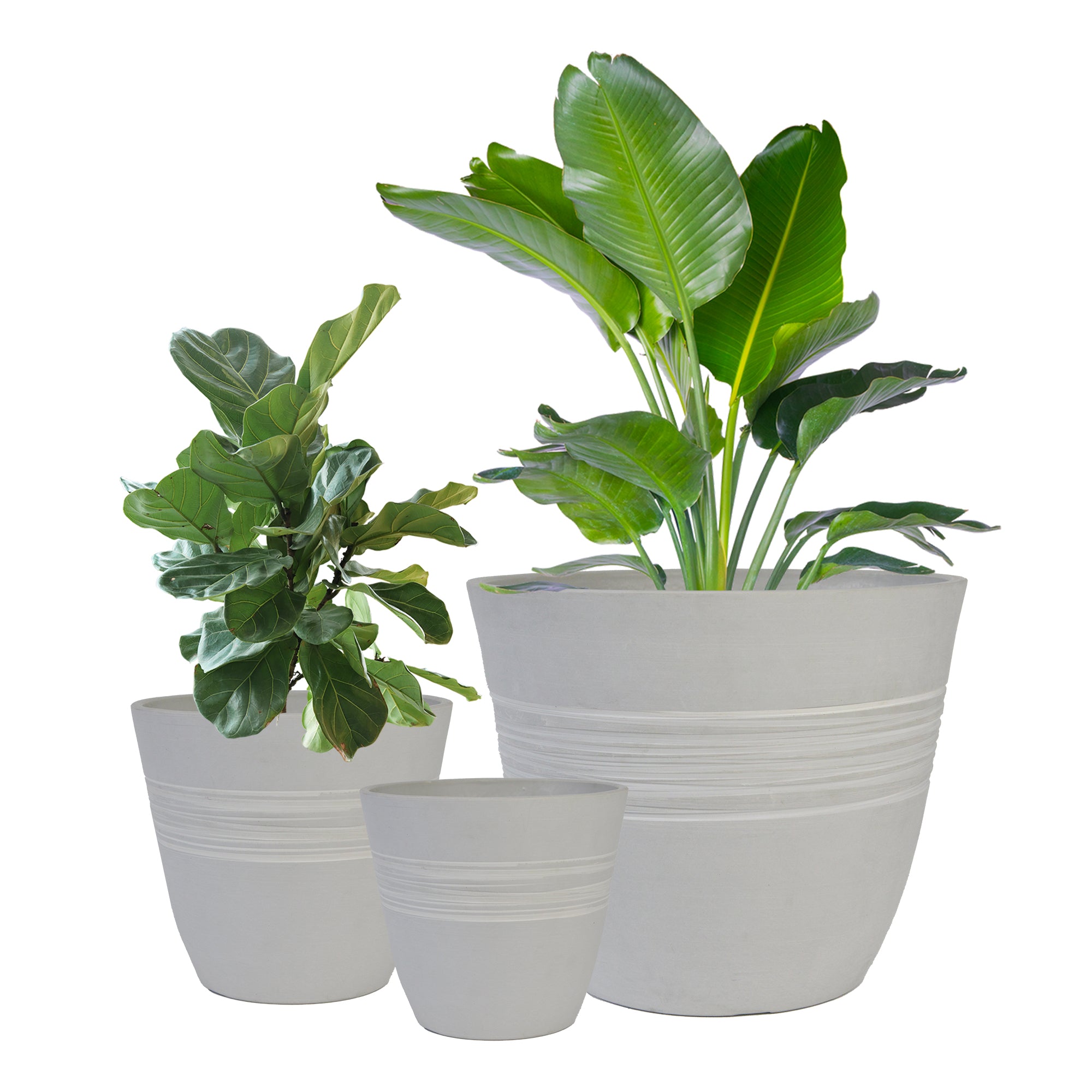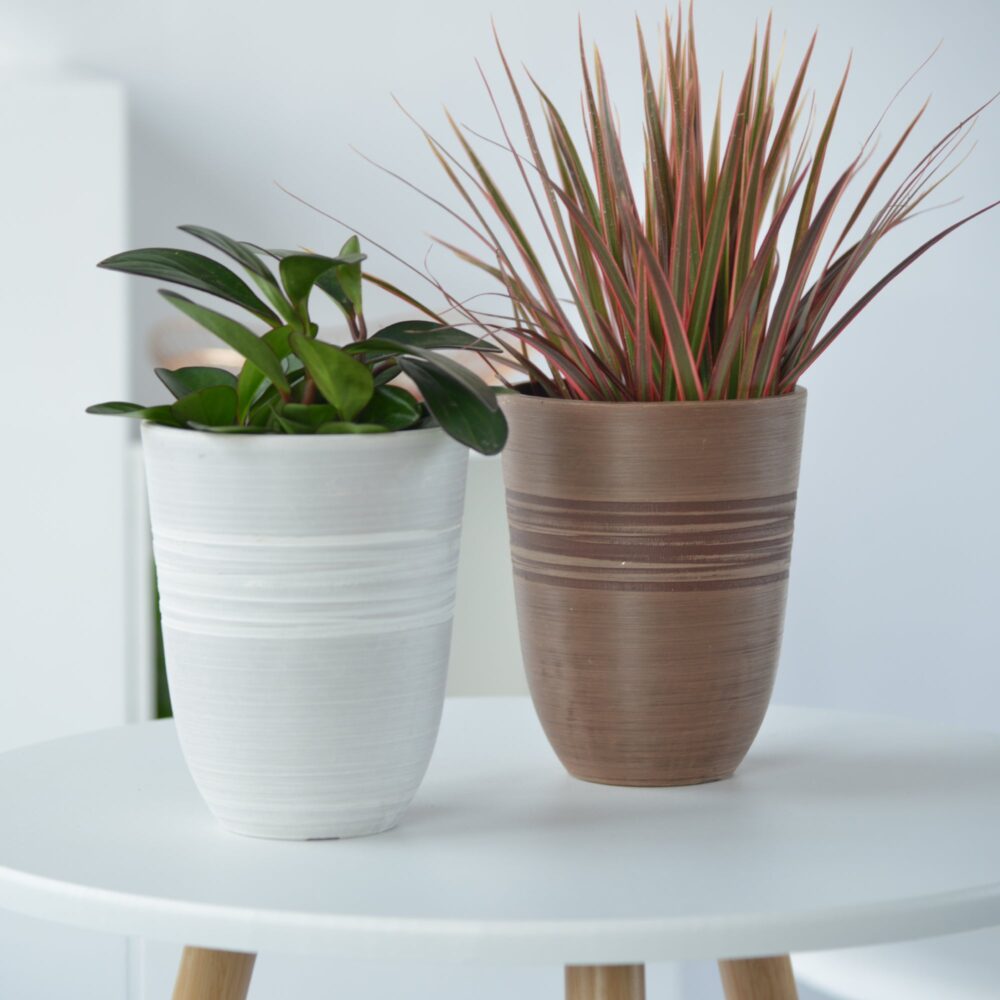Wisteria in Pots: The Complete Guide to Growing Wisteria Outdoors in Containers (Fragrant & Stunning!)
Want to add a cascade of breathtaking blooms and romantic fragrance to your patio, balcony, or garden? Growing Wisteria in containers is a wonderfully rewarding, though slightly more challenging, way to bring these spectacular flowering vines into your outdoor spaces. Celebrated for their stunning, pendulous clusters of fragrant flowers in shades of purple, lavender, pink, and white, their vigorous growth, their longevity, and their dramatic presence, Wisteria is perfect for creating a breathtaking focal point and adding a touch of timeless elegance to your outdoor living areas. This comprehensive guide will provide you with everything you need to know to grow Wisteria successfully in outdoor pots, from selecting the best varieties and containers to mastering essential care techniques for a stunning and fragrant display.
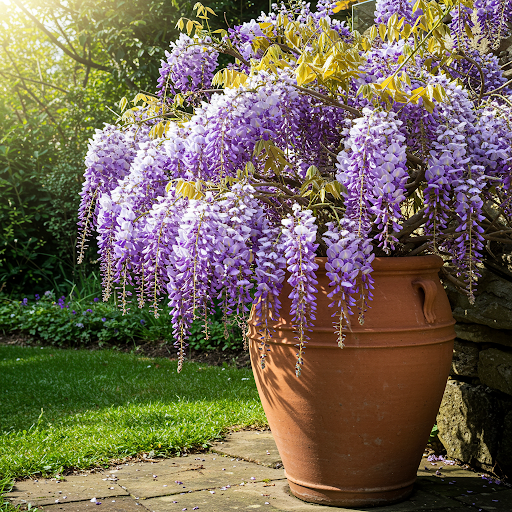
Wisteria
What is Wisteria?
Wisteria is a genus of deciduous, climbing vines belonging to the Fabaceae family (Legume family). Primarily native to East Asia (China, Korea, Japan) and North America, they are widely cultivated as ornamental plants in temperate regions worldwide, prized for their spectacular, fragrant flowers, vigorous growth, longevity, and dramatic, cascading floral displays. Wisteria vines are characterized by their twining stems, compound pinnate leaves, and pendulous racemes (clusters) of pea-like flowers that bloom profusely in spring, and sometimes with a lighter rebloom in summer. Flowers are typically fragrant and come in shades of purple, lavender, blue, pink, and white, depending on the species and cultivar. They exhibit a vigorous, twining, climbing growth habit, capable of reaching impressive sizes (up to 30-50 feet or more in length), and are known for their longevity (living for decades), dramatic floral displays, and ability to create a romantic and established garden aesthetic. Popular species include Chinese Wisteria (Wisteria sinensis) and Japanese Wisteria (Wisteria floribunda), along with their cultivars and hybrids.
Is Wisteria Good for Outdoor Pots?
Yes, Wisteria can be grown in outdoor pots and containers, although it is important to understand that it is a vigorous, large vine, and container growing will require specific techniques and commitment to pruning and care to manage its growth and ensure success. Growing Wisteria in pots offers some advantages, but also presents challenges:
- Controlled Size (to some extent): Container growing can help restrict the naturally vigorous growth of Wisteria, keeping it to a more manageable size than when planted directly in the ground. However, it will still require regular and significant pruning.
- Portability: Potted Wisteria can be moved, although mature potted Wisteria can become very heavy. Portability can be useful for optimizing sunlight exposure or for moving to a sheltered location in extreme weather.
- Design Versatility: Wisteria in pots can be used to create dramatic vertical accents on patios, balconies, or near entrances, adding a touch of grandeur and fragrance to paved areas.
- Preventing Invasive Spread: For some very vigorous Wisteria species (like Wisteria sinensis), container growing can help prevent their invasive spread into the garden, as they can be aggressive growers.
- Specific Soil Conditions: Container growing allows you to provide the specific well-draining soil mix that Wisteria prefers and control soil pH more easily.
Challenges of Growing Wisteria in Pots:
- Vigorous Growth and Need for Heavy Pruning: Wisteria is a very vigorous grower and even in pots, will require significant and regular pruning (multiple times a year) to keep it to a manageable size and encourage flowering rather than excessive vegetative growth.
- Large and Heavy Pots Required: To accommodate their root system and provide stability for the vine, Wisteria needs very large, heavy, and sturdy pots. Mature potted Wisteria can become extremely heavy and difficult to move.
- Water and Nutrient Demands: Even though established Wisteria is drought-tolerant in the ground, container-grown Wisteria will require regular watering and fertilization, especially during the growing and blooming season, as pots dry out faster and nutrients are depleted more quickly.
- May Take Longer to Bloom in Pots: Wisteria can be slow to bloom, even in the ground, and container-grown Wisteria may take even longer to mature and start flowering reliably (several years). Choosing grafted or flowering-age plants can help speed up blooming.
- Winter Dormancy and Chill Hours: Wisteria needs a period of winter dormancy and chill hours to bloom properly. In very warm climates like Singapore, providing sufficient chill might be a challenge, although some varieties may be better adapted to warmer climates than others.
Ideal Growing Conditions for Wisteria in Pots:
Suitable Wisteria Species and Varieties for Pots: While any Wisteria can technically be grown in a pot, some species and varieties are more suitable for container culture due to their growth habit and flowering characteristics:
- Japanese Wisteria (Wisteria floribunda) and its cultivars: Generally considered slightly less vigorous than Chinese Wisteria and may be more manageable in containers. Cultivars like ‘Issai Perfect’ are known for blooming at a younger age and being more compact.
- Dwarf or Compact Wisteria Varieties: Look for varieties specifically described as “dwarf” or “compact,” although true dwarf Wisteria is rare. Some cultivars may be less vigorous growers and more suitable for containers, but still require pruning.
- Grafted Wisteria: Choosing grafted Wisteria plants (grafted onto rootstock that promotes earlier flowering) is highly recommended for container growing, as they are more likely to bloom sooner than seedling-grown plants.
- Consider Bloom Time and Fragrance: Choose varieties based on your preferred flower color, bloom time (early, mid, late spring), and fragrance intensity.
Light: Wisteria demands full sun to bloom profusely. It needs at least 6-8 hours of direct sunlight per day, and ideally even more. Choose the sunniest location possible for your Wisteria containers, such as a south-facing patio, balcony, or rooftop. Inadequate sunlight will result in poor flowering or no blooms at all. Full sun is absolutely essential for abundant blooms.
Soil: Wisteria needs well-draining soil that is fertile and slightly acidic to neutral. Use a high-quality potting mixamended for excellent drainage and richness. Amend potting mix with compost, well-rotted manure, and perlite or grit to improve drainage, fertility, and aeration. Good drainage is crucial to prevent root rot, especially in containers. Avoid heavy, waterlogged soil. A slightly acidic to neutral pH (around 6.0-7.0) is ideal.
Watering: Wisteria prefers consistently moist soil, especially during its active growing and blooming season, but dislikes soggy conditions. Water deeply and regularly, especially during dry periods and when plants are actively growing and flowering. Water thoroughly when the top inch of soil feels slightly dry. Water deeply until water drains out of the drainage holes. Then, allow the topsoil to slightly dry before watering again. Avoid overwatering and consistently soggy soil, but also avoid prolonged drought stress, which can hinder growth and flowering. Container-grown plants will dry out faster than those in the ground, so monitor soil moisture regularly. Reduce watering slightly in the dormant season (winter).
Temperature: Wisteria is a temperate climate plant and needs distinct seasons to thrive and bloom best. It prefers moderate temperatures during the growing season and a period of winter chill. While they can tolerate warm summers, they need sufficient winter chill hours (periods below 40°F/4°C) to break dormancy and set flower buds for the following spring. In very warm climates like Singapore, providing sufficient chill hours for reliable flowering may be a significant challenge. Some varieties may be better adapted to warmer climates or require less chilling, but generally, Wisteria is best suited for regions with distinct winters. If attempting to grow Wisteria in a warm climate like Singapore, choose less vigorous varieties, provide afternoon shade during the hottest periods, and consider if artificial chilling methods (though impractical for large potted plants) might be necessary to induce flowering.
Pruning (Essential for Container Wisteria): Regular and heavy pruning is absolutely essential for growing Wisteria successfully in containers. Pruning is needed to control their vigorous growth, maintain a manageable size, and most importantly, to encourage flowering rather than just vegetative growth.
- Winter Pruning (Dormant Pruning): In late winter or early spring (during dormancy, before new growth starts), prune back the previous year’s growth hard, leaving only 2-3 buds per spur branch. This encourages flowering spurs to develop.
- Summer Pruning (After Flowering): After the spring bloom, prune back the long, whippy tendrils of new growth that emerge, cutting them back to about 6 inches from the main branches. This helps control size, shape, and encourages the development of flower buds for the next year. You may need to repeat summer pruning multiple times during the growing season as Wisteria is a very vigorous grower.
- Deadheading: Remove spent flower clusters after blooming to improve appearance and prevent seed pod formation, which can divert energy from future blooms.
Support (Trellis, Obelisk, or Wall): Wisteria is a climbing vine and needs strong support to grow upwards. Provide a sturdy trellis, obelisk, pergola, or wall for your potted Wisteria to climb on. Install the support structure at the time of planting or repotting. Ensure the support is strong enough to handle the weight of a mature Wisteria vine, even in a pot.
Fertilizing: Wisteria is not a heavy feeder, and over-fertilizing can actually promote leafy growth at the expense of flowers. Fertilize sparingly, only once or twice a year, in early spring and again in early summer, if needed. Use a balanced fertilizer (e.g., 10-10-10) or a fertilizer slightly lower in nitrogen (the first number) to avoid excessive foliage growth. Mature Wisteria often blooms best when slightly stressed and under-fertilized. Avoid high-nitrogen fertilizers, which promote leaf growth over flowers. You can also amend the soil with bone meal at planting time to provide phosphorus, which encourages flowering.
Choosing the Right Pots for Wisteria:
Suitable Pot Types: Wisteria needs very large, heavy, and sturdy pots to accommodate its root system and provide stability. Durability is also important as Wisteria can live for many years. Suitable pot types include:
- Large, Heavy Terracotta Pots: Very large terracotta pots (at least 20-24 inches in diameter and depth, or larger for mature plants) can be used, but they will be extremely heavy and potentially prone to cracking in freeze-thaw climates (less of a concern in Singapore). Terracotta provides good drainage and aeration.
- Very Large, Sturdy Ceramic Pots: Very large, high-quality ceramic pots, glazed or unglazed, are a good option, offering a wide range of styles. Ensure they are extremely sturdy and have drainage holes. Choose very large sizes (20-24 inches or larger).
- Very Large, Heavy Resin or Fiberglass Pots: Very large, heavy-duty resin or fiberglass pots are a practical choice as they are lighter than terracotta or ceramic of the same size, but still very durable and can be made to mimic the look of other materials. Choose very large, heavy-duty resin or fiberglass pots (20-24 inches or larger) that are UV-resistant and frost-proof if needed (though frost-proof is not relevant in Singapore).
- Avoid Thin Plastic Pots: Avoid thin, flimsy plastic pots as they are not sturdy enough for the weight and root pressure of a mature Wisteria and may crack or become unstable.
Drainage: Excellent drainage is essential for Wisteria. Ensure your chosen pot has multiple large drainage holesat the bottom. Avoid pots without drainage holes. Always use a generous drainage layer at the base of the pot (e.g., a thick layer of gravel or pot shards) beneath the potting mix to further enhance drainage. Elevating pots slightly on pot feet or bricks can also improve drainage and air circulation.
Pot Size: Choose the largest pot you can reasonably manage and that is aesthetically suitable for your space.Wisteria needs substantial root space, even when container-grown.
- Minimum Pot Size: A minimum pot size of 20 inches in diameter and 20 inches deep is recommended for young Wisteria plants.
- Ideal Pot Size (Mature Plants): For mature, established Wisteria plants in pots, aim for pots that are 24 inches in diameter and 24 inches deep, or even larger if possible (24-30 inches or more). The larger the pot, the better for long-term growth and flowering.
- Depth: Pots should be at least 20-24 inches deep to accommodate the deep root system of Wisteria.
Stability: Stability is paramount for potted Wisteria. Mature Wisteria vines can become very heavy, especially when in bloom and when trained on a trellis or support. Choose very heavy and wide pots made of terracotta, ceramic, or heavy-duty resin. Wider pots are more stable than tall, narrow pots. Ensure the pot is stable enough to support the weight of the mature vine and trellis, and to prevent toppling in wind.
Material and Style: Choose pot materials and styles that are durable, weather-resistant, and aesthetically pleasing in your outdoor space. Classic styles like terracotta or simple, elegant ceramic or resin pots in neutral tones (gray, charcoal, cream, white) often work well, allowing the dramatic Wisteria blooms to be the focal point. Ensure the pot style complements the grandeur of Wisteria.
Essential Care Tips for Thriving Wisteria in Outdoor Pots:
- Watering: “Water Regularly, Allow Topsoil to Slightly Dry Between Waterings”. Water deeply and regularly during the growing season, especially in dry periods. Allow topsoil to slightly dry between waterings. Avoid overwatering and soggy soil. Reduce watering in winter dormancy.
- Sunlight: Provide Full Sun (at least 6-8 Hours Daily) for Best Blooms. Place Wisteria pots in the sunniest location possible. Full sun is essential for flowering.
- Pruning: Regular and Heavy Pruning is Essential (Winter and Summer Pruning). Prune hard in late winter (dormant pruning) and again in summer after flowering (summer pruning) to control growth and encourage flowering. Regular pruning is crucial for container Wisteria.
- Support: Provide Strong Trellis, Obelisk, or Wall Support. Provide a sturdy support structure at planting time for Wisteria to climb.
- Fertilizing: Fertilize Sparingly, Once or Twice a Year with Balanced or Low-Nitrogen Fertilizer. Fertilize sparingly in early spring and early summer with a balanced or low-nitrogen fertilizer. Avoid over-fertilizing.
- Repotting (Infrequent, Every Few Years): Repot Wisteria only when it becomes significantly root-bound, typically every 3-4 years or longer, and only if absolutely necessary, as repotting large Wisteria can be very challenging. Top-dressing with fresh compost annually may be sufficient for mature plants in very large pots. Repot in late winter or early spring.
- Winter Dormancy (Chill Hours): Wisteria needs a period of winter chill to bloom properly. In warmer climates like Singapore, providing sufficient chill may be a challenge. Choose varieties that may be better adapted to warmer climates.
- Patience (May Take Several Years to Bloom): Be patient, as Wisteria, especially seedling-grown plants, can take several years to mature and start blooming, even under ideal conditions. Grafted plants bloom sooner.
Popular Wisteria Species and Cultivars for Pots:
- Wisteria floribunda (Japanese Wisteria): Generally considered slightly less vigorous than W. sinensis. Cultivars like ‘Issai Perfect’ are recommended for containers.
- Wisteria sinensis (Chinese Wisteria): Very vigorous, may be more challenging in containers, but some cultivars can be managed with heavy pruning.
- Wisteria x brachybotrys ‘Okayama’ (Silky Wisteria): Known for very long flower racemes and good fragrance. May be slightly less vigorous than W. sinensis.
- Wisteria frutescens ‘Amethyst Falls’ (American Wisteria): Native American species, non-invasive, reblooming, less vigorous, potentially more suitable for containers, but less dramatic flower display than Asian species.
In Summary:
Growing Wisteria in outdoor pots is a challenging but potentially rewarding endeavor for experienced gardeners seeking a dramatic and fragrant focal point in their outdoor spaces. While container growing can help manage their vigorous growth to some extent, Wisteria in pots still requires very large, heavy containers, regular and heavy pruning, consistent watering and fertilization, full sun, and ideally, a period of winter chill to bloom reliably. Choosing less vigorous varieties, grafted plants, and providing meticulous care are essential for success. In warmer climates like Singapore, achieving reliable flowering may be particularly challenging due to the lack of winter chill. However, for those willing to commit to the specific needs of container-grown Wisteria, the spectacular spring blooms and romantic fragrance can be a truly breathtaking reward.
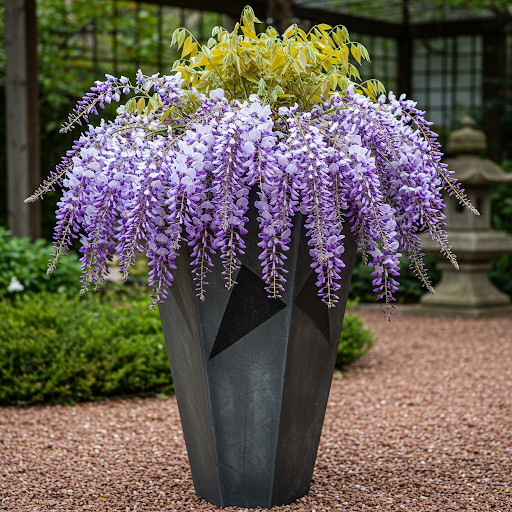
Wisteria
For more detailed botanical information and to explore the diverse world of Wisteria, you can visit the Wikipedia page on Wisteria.
Important Note: Growing Wisteria in pots is a long-term commitment that requires significant effort in pruning, watering, and providing support. Be prepared for the challenges and understand that achieving abundant flowering in containers, especially in warmer climates, may require patience and meticulous care. However, the dramatic beauty and fragrance of Wisteria blooms can be well worth the effort for dedicated container gardeners!
GreenShip 27inch Tall Planters for Porch, Large Outdoor Planter Pots with Drainage Hole
By greenship-seo|2025-04-10T06:27:21+00:00April 7, 2025|Categories: Hand-carving Series|Tags: Decorative Flower Pots|
Modern Plant Pots with Drainage – Indoor & Outdoor Use (6″ Widths)
By greenship-seo|2025-04-10T06:29:43+00:00February 6, 2025|Categories: Hand-carving Series|Tags: Decorative Flower Pots|
Planter 6 in W / 8 in W / 12 in W Indoor or Outdoor Plants, Modern Decorative Plant Pots with Drainage Hole, Decorative Flower Pots
By greenship-seo|2025-02-06T13:43:53+00:00January 16, 2025|Categories: Hand-carving Series|Tags: Decorative Flower Pots|
Planter 5 in W / 8 in W / 12 in W or Indoor Outdoor Plants, Modern Decorative Plant Pots with Drainage Hole, Decorative Flower Pots
By greenship-seo|2025-04-10T06:37:58+00:00January 16, 2025|Categories: Hand-carving Series|Tags: Decorative Flower Pots|
Plant Pots 6 inch 8 inch 12 inch for Indoor Outdoor Plants, Set of 3 Modern Decorative Planter with Drainage Hole, Decorative Flower Pots
By greenship-seo|2025-04-10T06:38:40+00:00January 16, 2025|Categories: Hand-carving Series|Tags: Decorative Flower Pots|
Plant Pots 6 inch 8 inch 10 inch for Indoor Plants, Set of 3 Modern Decorative Planter ts with Drainage Hole, Decorative Flower Pots
By greenship-seo|2025-04-10T06:39:28+00:00January 14, 2025|Categories: Hand-carving Series|Tags: Decorative Flower Pots|

